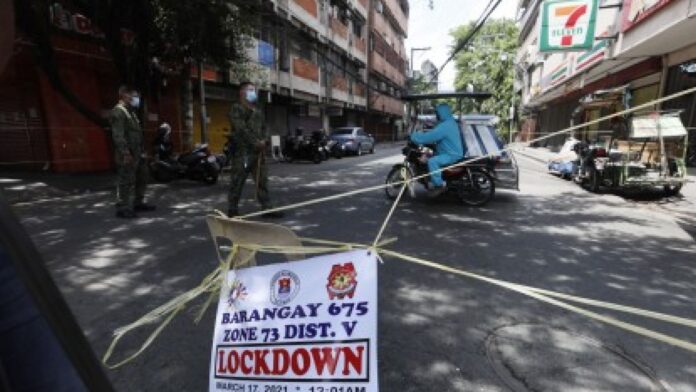The Inter-Agency Task Force for the Management of Emerging Infectious Diseases (IATF-EID) has ratified the guidelines on the pilot implementation of granular lockdowns and alert levels system in Metro Manila, Malacañang announced on Monday night.
Presidential Spokesperson Harry Roque, who is also IATF-EID spokesperson, said the new classification framework will start on Sept. 16.
“In this new classification framework, we proactively advocate the Principles of 3C’s (Closed, Crowded and Close Contact) Strategy, which shall be applied in Metro Manila starting September 16, 2021,” he said in a press statement.
He said there should be a need to strike a delicate balance between health and the economy.
“We should strive for total health and this can only be realized by carefully balancing our Covid-19 response by considering both the health of our people and the economic health of the nation, which this policy shift is all about,” he added.
Under the new guidelines, the new community quarantine classifications will have five Alert Levels that would determine the activities allowed in cities and/or municipalities.
These include:
* Alert Level 1 – refers to areas wherein case transmission is low and decreasing, total bed utilization rate, and intensive care unit utilization rate is low.
* Alert Level 2 – refers to areas wherein case transmission is low and decreasing, healthcare utilization is low, or case counts are low but increasing, or case counts are low and decreasing but total bed utilization rate and intensive care unit utilization rate is increasing.
*Alert Level 3 – refers to areas wherein case counts are high and/or increasing, with total bed utilization rate and intensive care unit utilization rate at increasing utilization.
* Alert Level 4 – refers to areas wherein case counts are high and/or increasing, with total bed utilization rate and intensive care unit utilization rate are high.
*Alert Level 5 – refers to areas wherein case counts are alarming, with total bed utilization rate and intensive care unit utilization rate at critical level.
The Department of Health (DOH) shall identify the Alert Level of the pilot area that “shall follow the protocols consistent with the declared Alert Level.”
“Areas placed under Alert Level 5 shall observe the guidelines applicable to Enhanced Community Quarantine (ECQ) as provided for under the IATF Omnibus Guidelines on the implementation of Community Quarantine in the Philippines, as amended,” the new guidelines stated.
On September 3, the IATF issued a resolution which provides that under the new classification framework, which focuses on the imposition of granular lockdown measures, community quarantine shall be reduced to either ECQ or general community quarantine (GCQ) “with the latter having an alert level system (Alert Level 1 to 4) with each alert level limiting restrictions only to identified high-risk activities.”
Authority to impose granular lockdown
City and municipal mayors will have the authority to impose granular lockdowns with respect to their component barangays subject to the concurrence of the Regional Inter-Agency Task Force (RIATF), and individual houses where one household member has been confirmed.
According to the new guidelines, granular lockdown or a micro-level quarantine for areas identified as “critical zones” by the local government unit (LGU) may be declared “regardless of Alert Level.”
Granular lockdowns must last for at least 14 days.
The declaration of granular lockdowns must be provisionally effective immediately and must include due notice to the RIATF.
The IATF retains its mandate to impose and/or lift lockdowns on highly urbanized cities and independent component cities.
Households within areas under granular lockdown must also be provided assistance by their respective local government units (LGUs) and the Department of Social Welfare and Development (DSWD).
The pilot test guidelines also provide that the Philippine National Police shall ensure peace and order at all times, and that the security protocols are maintained in lockdown areas.
During the lockdown period, only health care workers and non-health personnel working in hospitals, laboratories, and dialysis facilities “if their institutions are unable to provide accommodation”, and uniformed personnel tasked to enforce the granular lockdown, shall be allowed to move within, into, and out of the area. (PNA)


